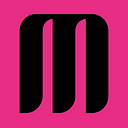MYNT Wireless Charger REVIEW Do not hesitate to try Wireless Charging
When I upgraded from the iPhone 7S Plus to the iPhone X and ultimately to the iPhone XS Max, I did not realize how much I would utilize wireless charging. Even though wired charging provides a markedly superior output, it has been convenient to simply place my phone onto a charger and to forget about it. Whether I set my phone to charge at my office desk or onto my nightstand overnight, I have enjoyed the freedom of remaining tether free. With an industry similar charging rate, there are few factors available to differentiate wireless chargers. The main challenge thus becomes one of visual appeal. Utilizing an attractive white Apple-esque design, I was excited to enhance my charging experience with the MYNT charger.
The MYNT Wireless Charger arrived in a 4 inches wide by 5 7/8 inches tall by 15/16 inches thick retail box, with a 3/4 inches tall cardboard hang tab. Along the center of the off-white cover panel, I found a 3 3/16 inches wide by 3 3/8 inches tall clear plastic window. Located behind the clear plastic, I was able to directly visualize the white surface of the charger. Except for the copper-colored M and MYNT logo, the surface color blended beautifully with that of the packaging. Diverting my gaze below the window, I found the product title “MYNT WIRELESS CHARGER” and four 3/4 inches diameter silver icons that highlighted the slim and thin nature, 10W fast charging, 2 modes switch, and Smart protection. The top and bottom panels were devoid or writing/imagery and both of the side panels displayed an attractive metallic-silver-font MYNT. The back panel proved to be the most useful of the surfaces by providing product specifications of the charger and the typical product labels. The MYNT model charger promised to accept 9V/1.67A or 5V/2A input and to output 10V of power.
Within the packaging you will find a thin white tray, housing the 3 9/16 inches square by 5/16 inches thick charger and a 41 inches USB-A to USB-Micro charging cable. Removing the 2.5-ounce white charger, I found a hidden 2 11/16 inches square, eight-panel, instruction manual. The manual provided a list of package contents, product features, and a useful connection diagram. Plug the micro-USB plug into the power input port and then plug the USB-A plug into a 9V/1.67 or 5V/2A wall charger. Even though it is not uncommon to have a plethora of wall chargers lying around, the packaging did not detail the need to supply your own charger. Imagine arriving at your vacation destination to discover that you could not charge your phone.
To utilize the device, simply place your wireless charging compatible device upon the charger and observe the front-facing LED color change from red to green. Once fully charged, the LED will change from green back to red. As an added convenience, the charger had a 5 1/4 inches square grey rubberized pad along the base, which helped decrease movement of the device. Placing the white charger onto my desk, I enjoyed the color, the shape, and the convenience of the charger. To test the current, I plugged a DROK USB-C Multimeter into a 10W 5V/2A Apple wall outlet and noted that my iPhone XS Max charged at 5V/1.35A. The rate was not optimal, charging below the max 7.5W wireless capabilities of Apple devices. As an aside, if you have an Android device and a quick-charge wall block, the instruction manual noted that you could enjoy fast charge capabilities.
As a test, I placed my iPhone XS Max onto charge at 22:40 with 52% power. I checked it again at 22:57 and found my phone to have 57% power, 66% power at 23:17, 74% power at 23:37, 77% power at 23:45, 85% power by 00:02 and 90% power by 00:10. By 00:45 my iPhone XS Max was fully charged. I was pleased with the rate of charge and with the overall unit. If you are looking for an attractive, cost-friendly wireless charger, look no further than the MYNT unit. For $20, you will get an unbelievably sleek wireless charging pad, a generous USB-A to USB-Micro cable and
For more information, visit themintbeeper.com
Find Slightech on Facebook and Twitter.
Related
Originally published at macsources.com on March 14, 2019.
